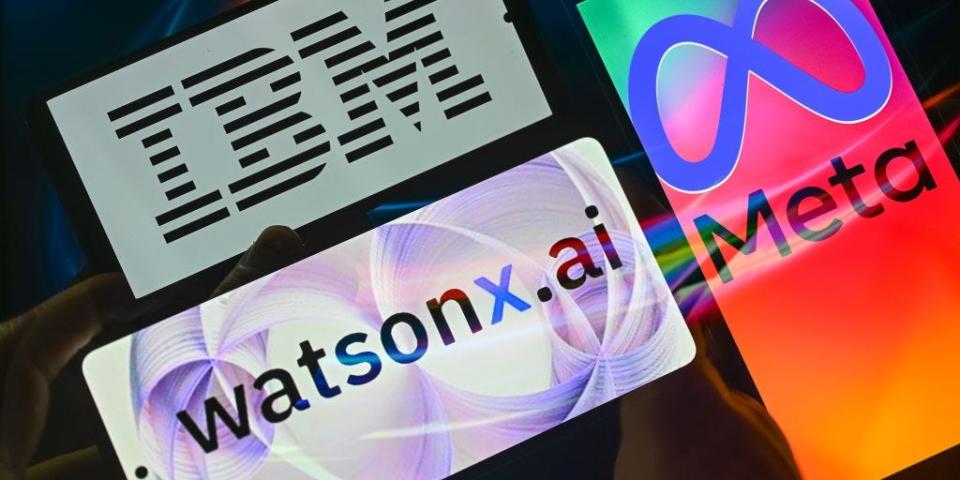How investors can avoid a lost decade for stocks whenever the tech bubble pops

-
As the Magnificent Seven giants keep gaining, concerns of stock-market concentration are rising.
-
A bursting of the AI bubble could see a lost decade for stocks similar to the end of the dot-com boom.
-
Diversifying portfolios is key for investors to avoid losses if the bubble deflates, Richard Bernstein told Business Insider.
The artificial intelligence craze marches on, and with it, fears of growing concentration in the stock market.
Nvidia‘s smash-hit earnings for the fourth quarter added $267 billion to its market cap on Thursday, more than Netflix’s entire value and setting a record for the largest single-day gain in history.
As the Magnificent Seven wrap up their latest earnings season, it’s fair to say that the AI trade is in full swing.
Yet, with such narrow leadership, analysts have warned of an AI-driven tech bubble reminiscent of two decades ago. Similar to that period, warnings are growing that the latest bubble will also burst.
“The important thing to remember is that bubbles ALWAYS center around a new technology or a new development. It’s a bit different in that so far…so far…it hasn’t resulted in widespread new issues,” Richard Bernstein, the president of Richard Bernstein Advisors said in an email to Business Insider.
The popping of the dot-com bubble ushered in a lost decade for the stock market.
From 1999 to 2009, the S&P 500 returned -1% per year, and the Nasdaq fared even worse at -5% per year (-6% per year for the Nasdaq 100).
“In fact, if one had bought NASDAQ at the peak of the Tech Bubble in March 2000, it would’ve taken nearly 14 years to simply break even,” Richard Bernstein Advisors wrote in a note last week.
Luckily, there’s a simple solution to avoiding the dot-com era fate that befell investors, RBA says: diversify.
“Shunning diversification has never been prudent, and that’s certainly true during bubble environments. The key to future returns may be simple, basic diversification.”
The Top Six vs. the Magnificent Seven
In the final year of the tech bubble in 1999, the thrill of internet technology and its potential to revolutionize the economy quickly inflated a handful of stocks, with the S&P 500 Information Technology sector generating a total return of 103.76% that year, RBA noted.
Meanwhile, “old economy” stocks were left behind by tech, with the six other major S&P 500 sectors generating an average return of 10.7%.
RBA analysis said many investors believe that today’s “AI bubble” is wildly different from bubbles of years’ past because the mega-cap leaders are “real companies” rather than those that commanded lofty valuations with little earnings to back them up.
This is a misconception, Bernstein said.
The six largest tech titans as of December 1999 – Microsoft, Cisco, Intel, IBM, Oracle, and Qualcomm — were legitimate companies with robust financial positions and positive cash flow at the time. But when the bubble deflated, none of those stocks saw a speedy recovery to previous highs. Cisco stock wouldn’t recover fully until 2019.
Today, the AI-fueled bubble and pandemic-related excess liquidity have pumped up stock valuations, leading to highly speculative and concentrated market leadership.
The Magnificent Seven stocks — Alphabet, Amazon, Apple, Meta, Microsoft, Nvidia, and Tesla — account for roughly 29% of the S&P 500 these days. Bernstein said despite some of those names showing solid fundamental growth, the growth isn’t exceptional compared to many other companies.
“There are currently about 140 stocks within the G-7 equity markets (US, Canada, Germany, Japan, France, the UK, and Italy) projected to grow earnings 25% or more over the next year. Most importantly, only 3 of the Magnificent 7 pass the screen and the fastest growing of the Magnificent 7 ranks only 25th,” he said in the note.
Diversification is key
Bernstein reiterated that investors have to diversify their portfolios to avoid future losses that dragged down portfolios in the years after the dot-com bust. Luckily, the range of sound investments outside of the largest stocks amounts to a “once in a generation” opportunity RBA has argued.
“If your view of the world proves incorrect, then you’ll have something that’s likely to outperform in that unanticipated scenario. So, there should always be a spare tire in the portfolio in case you’re wrong,” he told Business Insider.
He further made a distinction between “economy opportunities” and “investment opportunities.”
“Technology always changes the economy. My favorite ‘technology’ that significantly changed the economy was the light bulb because it turned the economy into a 24-hour economy,” he said. “AI will change the economy, but that doesn’t mean investing in the accepted AI stock today will prove profitable over the longer-term.”
Read the original article on Business Insider

